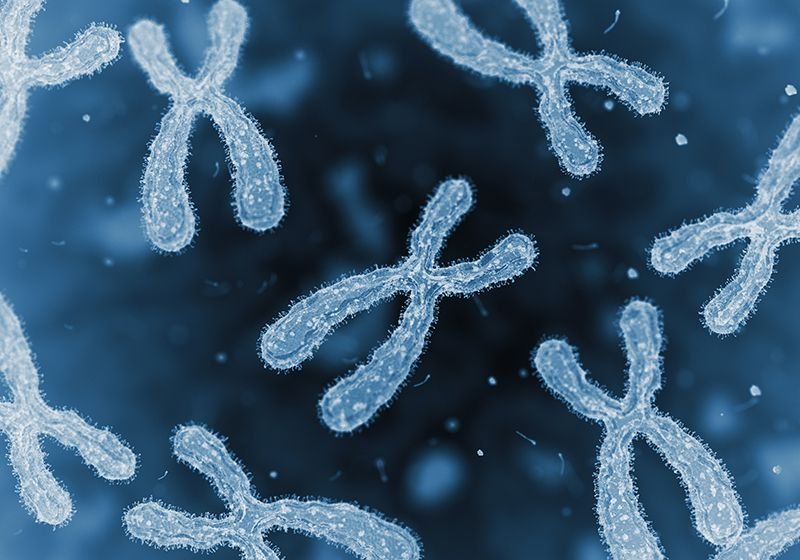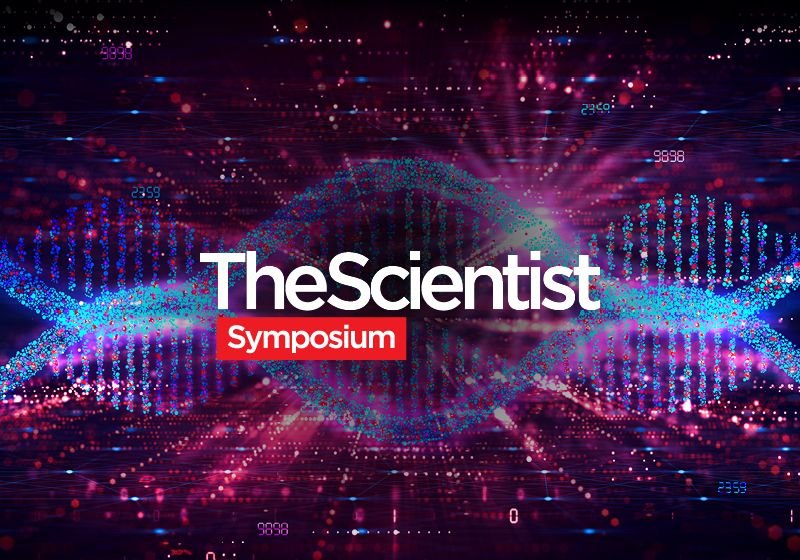When one cell becomes two, it must divide its chromosomes equally. To accomplish this feat, each chromosome comes equipped with a centromere. As a chromosome duplicates, the centromeres connect the old and new copies in an X shape. This union provides the mitotic spindle a place to latch onto so that it can tug the two chromosomes apart during cell division.1 Without centromeres, cells would fail to evenly separate their chromosomes. This could lead to aneuploidy conditions, such as Down syndrome, in which people are born with an unbalanced set of chromosomes.2
Six years ago, when Glennis Logsdon was a graduate student, everyone assumed that centromeres had conserved sequences and structures given their essential role in divvying up genetic material. “We had one consensus sequence that we used for all centromeres, and we thought, ‘this is all we need to know,’” said Logsdon, a geneticist at the University of Pennsylvania. Now, in a paper published in Nature, Logsdon and her colleagues reported that centromeres differ greatly between people.3 Their findings could allow researchers to explore which centromere characteristics predispose humans to aneuploidy.
One reason scientists remained unaware of the rich diversity of centromeres was because of how tough they are to sequence. “In fact, most people just throw it out because it’s the only part of the genome you couldn’t touch,” said Yamini Dalal, a molecular biologist at the National Institutes of Health (NIH) who was not involved with the study. Normally, researchers decode a chromosome by sequencing short segments and piecing them into a single string at points where their sequences overlap, just as someone completing a jigsaw puzzle might use objects in the image to guide them. Centromeres, however, are mostly made up of repeating sequences. Just as one might struggle to solve a jigsaw puzzle of a recurring pattern, scientists fail to string together short reads collected from the chromosome’s repetitive core.
To solve this puzzle, Logsdon and her team first turned to nanopore sequencing, a strategy for producing lengthy reads spanning long stretches of the centromere.4 However, this technique is error prone, producing sequences riddled with faults like a completed jigsaw with a few pieces in the wrong places. To right these errors, they subsequently collected accurate, short reads across the centromere using single-molecule, real-time sequencing and overlayed them onto the template. This allowed them to correct each of the mistakes and piece together a full, accurate sequence for the center of each chromosome.5

Once they completely sequenced centromeres from two human genomes of European descent, they compared them side-by-side and found differences in their sequences, size, and associations with epigenetic proteins. “It was completely unexpected to me,” said Dalal. “One surprising result here is that centromeres are highly plastic—much more plastic than any of us have given them credit for.”
Logsdon and her team compared these centromeres to ones previously sequenced from 56 other human genomes and found even more diversity in their makeup.6,7 Daniël Melters, a chromosome biologist at the NIH who was not involved with the work, speculated, “If we look at a lot more humans, there’s going to be a lot more diversity than that.”
To gain insights into centromere evolution across species, Logsdon and her team sequenced this elusive bundle of DNA in nonhuman primates. They compared human centromeres to those in chimpanzees, macaques, and orangutans. Chimpanzees have centromeres that are one-third shorter than the human counterparts. “Despite their smaller size, they still have a very similar structure with highly identical sequences in the center of the centromere that become more divergent as you go towards the periphery,” Logsdon said. Orangutan and macaque centromeres showed greater differences—two and five times longer than human ones, respectively.
Once they sequenced centromeres across species, the team estimated how rapidly they evolved. These core chromosomal regions mutated just over four times faster than gene-rich regions of the genome. Normally, biological structures with essential functions are evolutionary conserved, but centromeres paradoxically flout these rules. “They are fast evolving, and no one really knows why,” Dalal said.
The team have yet to decipher which of these centromere characteristics predispose cells to faulty chromosome splitting during cell division. “My hypothesis is that having too small of a centromere or having too large of centromere are both negative situations,” Logsdon said. Too small and the cell might struggle to tether chromosomes before separating them during cell division. Too large and the cell might tether the chromosome at two sites, ripping the chromosome in a tug-of-war between the two new cells.
If researchers characterize which centromere features lead to uneven chromosome splitting, they may eventually predict one’s likelihood of having a child with an aneuploidy condition before pregnancy, Logsdon said.
Aneuploidy also occurs in cancers and aging cells, which are riddled with mutations, and Logsdon hypothesizes that centromeric variation in particular could account for these phenomena.8 Moving forward, she plans to study how centromeres vary over a lifetime and in tumors versus healthy tissues, with the hope of identifying how the chromosome’s core contributes to aging and disease.
References
1. Fukagawa T, Earnshaw WC. The centromere: Chromatin foundation for the kinetochore machinery. Dev Cell. 2014;30(5):496-508.
2. Hultén MA, et al. On the origin of trisomy 21 Down syndrome. Mol Cytogenet. 2008;1(1):21.
3. Logsdon GA, et al. The variation and evolution of complete human centromeres. Nature. 2024;629(8010):136-145.
4. Goodwin S, et al. Oxford Nanopore sequencing, hybrid error correction, and de novo assembly of a eukaryotic genome. Genome Res. 2015;25(11):1750-1756.
5. Rhoads A, Au KF. PacBio sequencing and its applications. Genomics Proteomics Bioinformatics. 2015;13(5):278-289.
6. Liao WW, et al. A draft human pangenome reference. Nature. 2023;617(7960):312-324.
7. Ebert P, et al. Haplotype-resolved diverse human genomes and integrated analysis of structural variation. Science. 2021;372(6537):eabf7117.
8. Naylor RM, Van Deursen JM. Aneuploidy in cancer and aging. Annu Rev Genet. 2016;50(1):45-66.










